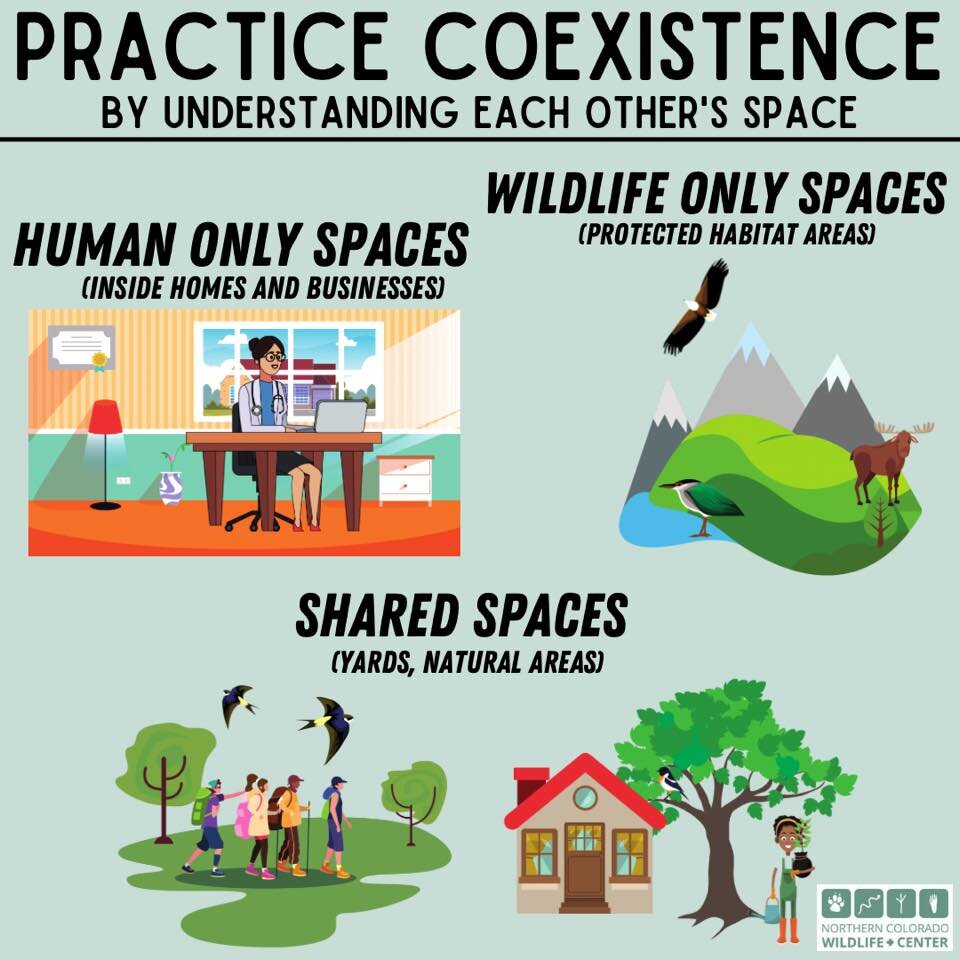Other Humane Solutions Education
Fish Responsibly
Picking up litter is a free, relatively easy way to help our your community’s wildlife. In Northern Colorado, fishing litter is one of the largest causes of wildlife injury, accounting for nearly 40% of our rescue calls in 2020.
3 Ways to Help Wildlife
Supervising pets while they are outdoors, closing dumpster lids, and cleaning bird feeders and baths are just a few ways you can help wildlife throughout the course of your day.
Wildlife Can Die When Balloons Fly
Balloons litter habitats when they are released into the air. This not only introduces string that can tangle and constrict wildlife, but also rubber and elastic that can mimic prey. This then clogs up the animals digestive tract because they can not digest plastics and other synthetic materials.
Walk Yards Before Performing Maintenance
You’d be surprised who all is in your yard so just taking an extra minute to walk through before starting your mowing or weed eating work will give wildlife a heads up to leave the area, or you’ll find nests that you need to avoid. Work areas should be safe for all of us so please look before you cut and watch where your blade or strings are going.
Wildlife Safe Holiday Decorations
Let’s make sure we can all enjoy the holiday season by ensuring our decorations don’t have negative impacts on our local wildlife. Keep decorations well secure and free of any loops so that wildlife can not get caught up in it. You can also purchase mammal repellent sprays to coat the wires to keep rodents, like squirrels, from chewing on them.
Cut It Before You Trash It
Looped garbage and wildlife don’t mix! Looped garbage can harm any animal; from fish to birds to turtles. These loops wrap around necks, legs, and wings and then cuts into the animal as it struggles to free itself. Luckily there is a super easy solution! Just snip the loops before you toss it in the trash can.
Wildlife Safe Fencing
Fencing that is designed to help wildlife travel come in handy for many species, especially during migration seasons. Smooth wire on the top and bottom layers of wire will prevent wildlife from catching themselves on it, but shorter heights and single profile fences also help ensure they can travel as they wish.
Talk to Your Kids About Wildlife
One of the biggest reasons licensed wildlife rehabilitators work so hard towards their mission of saving wildlife is so that our future generations have wildlife to enjoy. It is important to talk to children about wildlife and coexistence early because they are often the ones finding and interacting with wildlife the most since they are outside playing more often than adults. Sometimes children unknowingly harm wildlife by collecting dozens of eggs from wild nests, knocking down nests, littering, or kidnapping wildlife from the wild and bringing them home as pets. These instances can all be avoided with just a little bit of education and a conversation about respecting wildlife’s space and protecting their habitats.
Practice Coexistence With a Perspective Shift
People turn their coexisting powers on and off multiple times a day! For example, you don’t have to coexist when you’re watching Netflix at home alone, but that changes once you have to take a trip to a grocery store; a shared space between humans. In human only spaces, humans get to choose which people and pets are allowed in. When a bat flies in uninvited or a raccoon walks through the unlocked dog door, it is appropriate to call a licensed wildlife rehabilitator so that the animal can be humanely removed and released back into its habitat. Wildlife only spaces need just as much respect from people. People should stay out of these areas except for the few conservation managers responsible for ensuring their protection. Just like humans, wildlife need their privacy too so that they can reproduce and live a life free from the stress people bring to an open space. This is especially important for endangered species. Shared spaces are where human-wildlife conflicts are most likely to arise, so we must be extra cognizant of coexistence here. Calling a licensed wildlife rehabilitator to stop the birds from singing outside of your home or to remove a healthy animal from a natural area because you think it’s too dangerous is not an appropriate reason to call a licensed wildlife rehabilitator. This is because these animals are not in any need and have the right to share the space too. We can try to offer advice, but we must focus our efforts on the wildlife in need.








